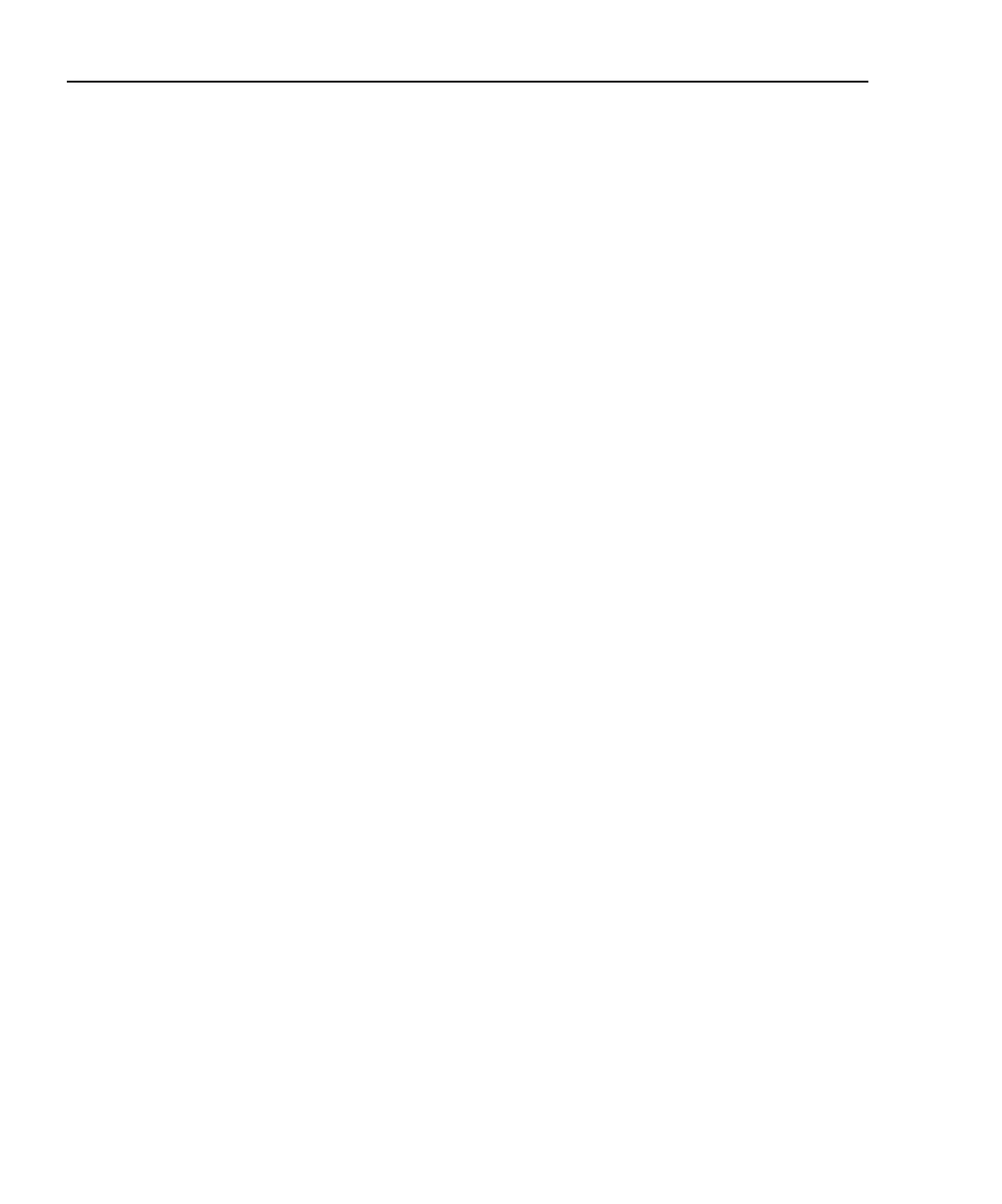11-16 Limit Testing Models 2500 and 2502 User’s Manual
Configuring and performing limit tests
Configuring limit tests
Press CONFIG and then LIMIT to display the CONFIG LIMITS MENU. The limits con-
figuration menu is structured shown below and in Figure 11-10. The limits configuration
menu is structured as follows. Note that bullets indicate the primary items of the limit
menu and dashes indicate the options of each menu item. Refer to Section 1, “Rules to
navigate menus,” to configure the limit tests.
• DIGOUT — Use this menu item to control the following Digital I/O aspects:
– SIZE — Use to select 3-BIT or 4-BIT Digital I/O bit size (or 16-BIT with 2499-
DIGIO option). In the 3-BIT mode, Digital I/O line 4 becomes the EOT, /EOT,
BUSY, or /BUSY signal depending on the selected END-OF-TEST mode. In the 4-
BIT mode, Digital I/O line 4 is controlled manually if the END-OF-TEST mode is
set to EOT.
– MODE — Use to select GRADING or SORTING mode. In GRADING mode, a
reading passes if it is within all of the HI/LO limit tolerances enabled, assuming
that it has passed the compliance tests first. The Digital I/O will be driven with the
first pattern of the first compliance, HI, or LO failure. Otherwise, the pass pattern
will be output. In GRADING mode, you will also choose bin control modes. With
IMMEDIATE, the testing process will stop after the first failure and place the fail
pattern on the digital output. If none of the limit tests fail, the pass pattern will be
placed on the output, and the testing process will stop. With END, the testing pro-
cess will continue until the programmed sweep is completed, regardless of how
many failures occur. This allows multi-element devices to be tested. After testing is
finished, the bit pattern for the first failure is placed on the output. If all tests pass,
the pass pattern will instead be placed on the output.
In SORTING mode, a reading will fail if it fails the compliance test, or is not
within any of the Digital I/O Bands. If the tests pass and only Limit 1 or 2 is
enabled, the associated pass pattern will be output. Otherwise, the first limit test
band that passes will output its lower limit pattern (upper limit patterns will be
ignored). If Limit 1 or 2 fails, its failure patterns will be output. If no Limit 3 to 6
passes, their failure pattern will be output. When SORTING is selected, the Digital
I/O bit pattern can also be set (0 to 7, 3-bit; 0 to 15, 4-bit).
– AUTO-CLEAR — Use this menu item to ENABLE or DISABLE auto-clear for
the digital output. After enabling auto-clear, you will be prompted to set the
pass/fail pattern pulse width (delay; 0 to 60.00000sec). You will then be prompted
to set the digital output clear pattern (0 to 7, 3-bit; 0 to 15, 4-bit; 0 to 65535, 16-
bit).
NOTE 16-bit digital output patterns are available only with the 2499-DIGIO option.
Test Equipment Depot - 800.517.8431 - 99 Washington Street Melrose, MA 02176
TestEquipmentDepot.com

